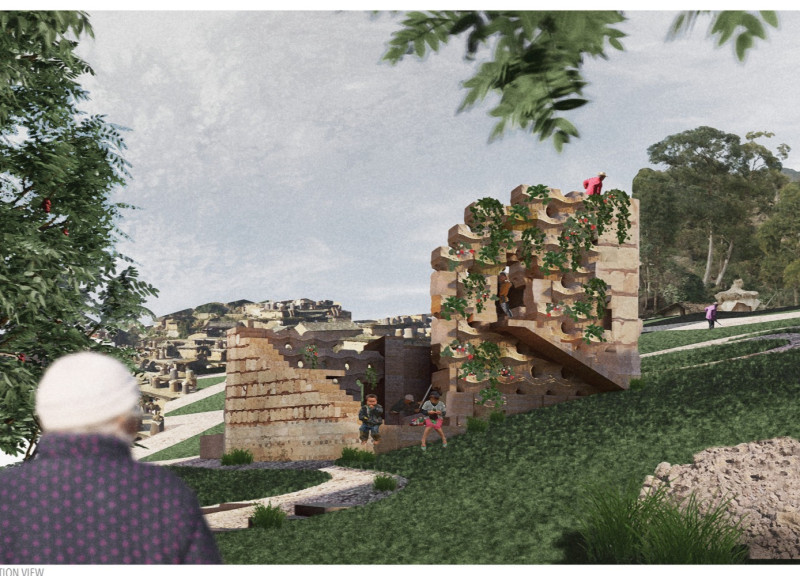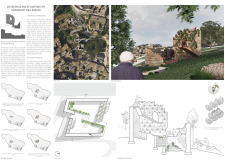5 key facts about this project
The design titled "Un-earthing and Re-earthing the Strawberry Wall Garden" is located in Chengzi Village, Yunnan Province, China, a place recognized for its agricultural background and hilly landscape. The pavilion serves as a space for growing strawberries while also acting as a community hub that encourages interactions among villagers. The overarching concept merges sustainable practices with local traditions, creating a connection between the structure and its environment.
Excavation and Construction
The project begins with the excavation of soil, which is used as a primary building material for the pavilion. This approach ties the construction directly to the site’s natural resources and highlights the importance of the landscape. By carefully digging into the ground, the design creates the main walls of the pavilion from the soil it disrupts. This method not only reduces waste but also ensures that the building is in harmony with its setting.
Planter Walls
Another key feature of the pavilion is the planter walls, made from modular units formed by hammering the excavated mud into steel mouldings. This method reinforces the agricultural purpose of the pavilion while strengthening the bond between the structure and local farming practices. As the planter walls expand through additional excavation, they develop a flowing and organic shape that captures the ongoing relationship between the community and the land. The design, with its lack of defined edges, enhances the idea of growth and change.
Cultural Integration
Rammed earth construction is a traditional technique that has been used in the area for over 500 years. By incorporating this method, the design pays respect to local heritage and contrasts with modern building practices that often focus on speed and efficiency with contemporary materials. This integration of traditional techniques highlights the cultural significance of the methods while creating a functional space that is in line with historical practices.
Community Engagement
The pavilion also aims to foster community participation. It provides space for villagers to engage in activities such as planting strawberries and making jam, which encourages social connections and collective involvement. Through these activities, the pavilion becomes more than just a structure; it evolves into a shared space where local culture can thrive. The design invites a sense of ownership and collaboration among community members, shaping its use over time.
As the sun moves across the sky, sunlight streams through the planter walls. This creates a shifting play of light and shadow within the pavilion, enhancing the relationship between nature and the built form, and marking the passage of time.



















































